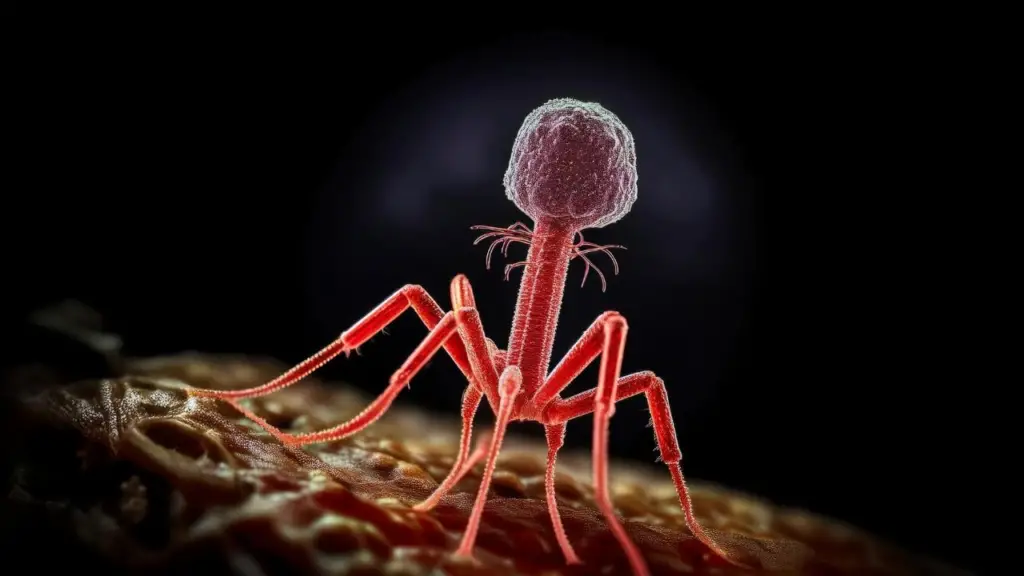While the harmful effects of bacteria on other living beings, including plants, animals, and fungi, are widely known, the idea that some bacteria can attack other bacteria is less familiar. One of the most renowned predatory bacteria is the Bdellovibrio bacteriovorus, which belongs to the genus Bdellovibrio. This bacterium has attracted a lot of attention as a potential therapeutic tool, with some experts believing it could be used to combat gram-negative pathogenic bacteria, just as phages are used. Although the use of bacteria in the treatment of bacterial infections has received less consideration compared to phage therapy, researchers believe that if proven effective, it could address some of the limitations of phage therapy.

Bdellovibrio bacteriovorus
Bdellovibrio bacteriovorus is a unique Gram-negative bacterium that preys on other Gram-negative bacteria to survive. In 1963, Stolp and Starr stumbled upon this bacterium while trying to isolate bacteriophages from a soil sample. The unexpected presence of lytic plaques sparked their curiosity, leading them to further investigate the cause. To their surprise, they found that the plaques were created by a bacterium, not a bacteriophage. This bacterium has a similar life cycle to a phage, with some key differences, and it can only grow in the presence of prey.
Distribution
Bdellovibrio bacteriovorus is a widely-occurring bacterium found in various natural environments, including water, soil, plants, animals, and even the human gut. Despite being influenced by environmental factors such as temperature, pressure, and salinity, as well as the availability of their prey, they are not considered rare.
Life cycle
Bdellovibrio bacteriovorus cycle has got two lifestyles, host-dependent, and host-independent.

1. Host dependent
Bdellovibrio bacteriovorus follows a specific predatory lifestyle in which it attaches to the outer membrane and peptidoglycan layer of gram-negative bacteria, creating a small opening. The bacterium then enters the host’s periplasmic space through the opening and remains reversibly attached during this “recognition period.”
Afterwards, the bacterium becomes irreversibly attached, sealing the opening in the membrane. The host’s peptidoglycan layer is then digested by the L, D transpeptidases enzyme, causing the host cell to become amorphous and spherical. This structure is known as the “bdelloplast.” The Bdellovibrio continues to grow filamentous, using up host nutrients and hydrolytic enzymes until the host’s resources are exhausted. At this point, the filament septates to form new Bdellovibrios, which become motile before breaking down and lysing the host cell, thus being released into the environment
2. Host independent
The bacterium reproduces through binary fusion, a method commonly used by bacteria to reproduce and survive.
Can Bdellovibrio bacteriovorus be used for therapy?
While there has not been a formal application in practice, laboratory experiments have led to suggestions for its use. Bdellovibrio bacteriovorus presents a unique solution not offered by other treatments, such as phage therapy, and has the potential to overcome the limitations of phage therapy in the fight against antibiotic-resistant bacteria. However, its practicality in the field remains uncertain, as this method of treating bacteria has more limitations compared to other therapies.
Advantages of using Bdellovibrio bacteriovorus for therapy
- Bdellovibrios exhibit a wide spectrum of activity.
- There have been no reports of the transfer of antibiotic resistance genes that give resistance to predation.
- High effectiveness in combating biofilms.
- No specific resistance has been observed toward them.
Disadvantages of using Bdellovibrio bacteriovorus for therapy
- A lack of specificity may disrupt the natural balance of microorganisms.
- The possibility of not being able to fully eliminate the targeted bacteria population.
- Challenges in reducing systemic blood infections.
- The presence of skepticism towards the use of live bacteria for treatment.
- Concerns about the potential transfer of antibiotic resistance genes, although this has not been reported yet.
Differences between Bacteriophages and Bdellovibrio bacteriovorus
| Bacteriophages | Bdellovibrio bacteriovorus |
|---|---|
| They are viruses | They are bacteria |
| They have a narrow host range | They have a broad host range |
| Their life cycle depends on the host only (they can not exhibit living character on their own) | They can survive and exhibit living characters with or without the host |
| Different phages prey on other bacteria (gram-positive and gram-negative) | Prey on gram-negative bacteria only |
Thank you for visiting The Phage! If you enjoyed your experience and don’t want to miss out on future updates, consider subscribing to our newsletter.
REFERENCE ARTICLES
- Francis M. Cavallo, Lorea Jordana, Alexander W. Friedrich, Corinna Glasner & Jan Maarten van Dijl (2021) Bdellovibrio bacteriovorus: a potential ‘living antibiotic’ to control bacterial pathogens, Critical Reviews in Microbiology, 47:5, 630-646, DOI: 10.1080/1040841X.2021.1908956.
- Stolp, H., Starr, M.P. Bdellovibrio bacteriovorus gen. et so. n., a predatory, ectoparasitic, and bacteriolytic microorganism. Antonie van Leeuwenhoek 29, 217–248 (1963). https://doi.org/10.1007/BF02046064.




Comments